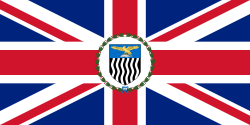This article needs additional citations for verification .(May 2021) |
| Governor of Northern Rhodesia | |
|---|---|
 Flag of the governor of Northern Rhodesia (1939–1964) | |
| Style | His Excellency The Right Honourable |
| Appointer | British monarch |
| Formation | 1 April 1924 |
| First holder | Herbert Stanley |
| Final holder | Evelyn Hone |
| Abolished | 24 October 1964 |
The governor of Northern Rhodesia was the representative of the British monarch in the colony of Northern Rhodesia from 1924 to 1964. The governor was appointed by the Crown and acted as the local head of state, receiving instructions from the British government.




